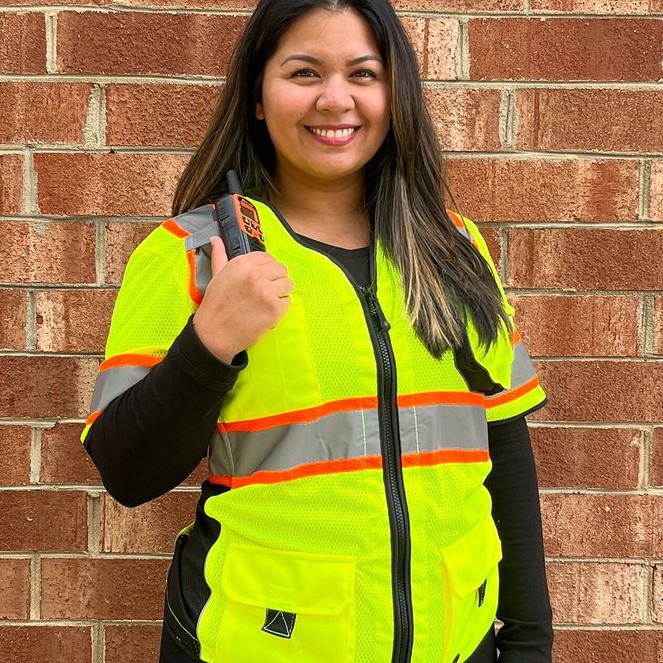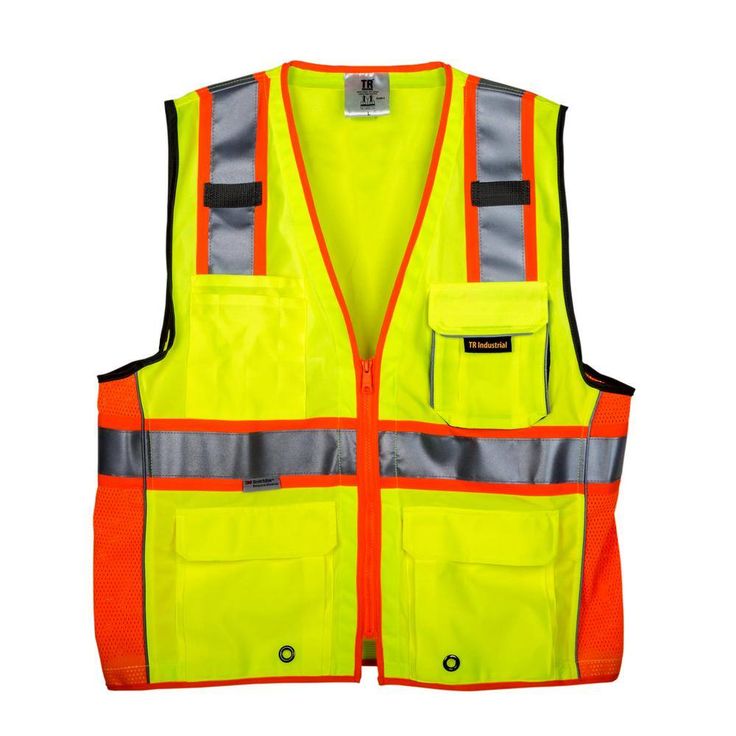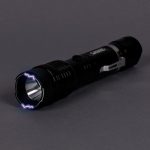What is a Class 3 Safety Vest?
A Class 3 safety vest is essential for high-risk work environments. It ensures workers are visible in hazardous conditions, especially in low-light or high-traffic areas. These vests meet specific standards that guarantee their effectiveness. Below, we’ll explore their definition, standards, and key features.
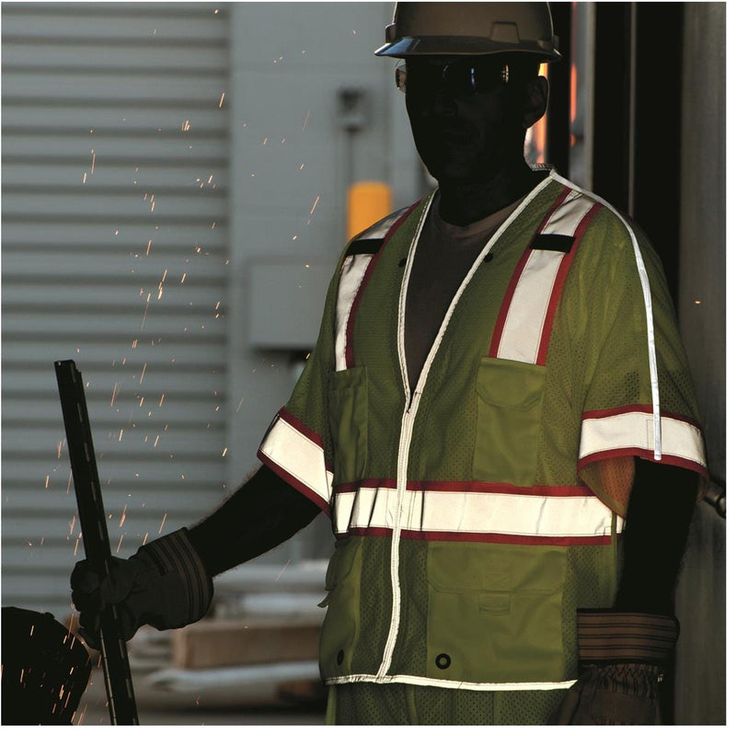
Definition and Standards
Class 3 safety vests are high-visibility garments designed for maximum visibility and safety. According to ANSI (American National Standards Institute) regulations, they must have a specific amount of reflective material and bright colors. These vests are primarily made in fluorescent yellow-green, orange-red, or red colors. They also feature reflective tape, making them visible during night and daytime.
ANSI sets strict guidelines for Class 3 vests. These include a minimum amount of reflective material of 310 square inches. Additionally, the background material must cover at least 1,240 square inches. Compliance with these standards ensures optimal visibility to protect workers in high-risk zones.
Key Features of Class 3 Safety Vests
Class 3 safety vests offer several unique features to maximize safety.
- Enhanced Reflective Tape: Wide and thick reflective strips improve visibility over long distances. These strips often wrap around the torso, arms, and shoulders.
- Bright Colors: Fluorescent colors like yellow or orange ensure high visibility in daytime. These colors stand out against most backgrounds, making workers easy to spot.
- Full Coverage Design: Class 3 vests often include sleeves for better visibility. This design exceeds the coverage of Class 1 and Class 2 vests.
- Universal Fit and Pockets: Many vests are adjustable for comfort and functionality. Added pockets offer convenience for carrying tools or small equipment.
Choosing a high-quality Class 3 vest is critical for safety. Ensure it meets OSHA and ANSI standards while offering functionality, comfort, and durability.
Who Needs a Class 3 Safety Vest?
Class 3 safety vests are essential for people working in high-risk environments. These vests provide visibility and safety, especially in industries with heavy machinery, vehicles, or low-light conditions. Below, we will cover key sectors and regulations that mandate their use.
Industries and Occupations That Require Them
- Roadside Construction Workers: Workers repairing roads or highways face traffic risks and require maximum visibility.
- Traffic Control Personnel: Flaggers and traffic directors rely on these vests to be seen by drivers.
- Emergency Responders: Police, firefighters, and paramedics working at accident sites need high visibility to stay safe.
- Utility Workers: Electricians and plumbers repairing infrastructure need to be noticed in busy environments.
- Warehouse and Dock Workers: Those near moving forklifts or heavy vehicles need enhanced visibility to avoid accidents.
Class 3 vests are tailored to environments where maintaining visibility can save lives. Their full coverage design makes them ideal for a range of occupations.
OSHA and ANSI Regulations
Class 3 safety vests must comply with specific safety standards set by OSHA and ANSI.
- ANSI Requirements:
- The American National Standards Institute (ANSI) has established specific requirements for Class 3 safety vests to ensure optimal visibility for workers in hazardous environments. According to ANSI regulations, each safety vest must include a minimum of 310 square inches of reflective material.
- Additionally, the vest must have a total of 1,240 square inches of background fabric that is brightly colored (such as fluorescent yellow, orange, or red) to enhance visibility in all conditions.
- These requirements are designed to ensure that workers wearing Class 3 vests can be easily seen, which is crucial for preventing accidents and mitigating risks in areas where vehicle or equipment traffic is prevalent.
- OSHA Standards:
- The Occupational Safety and Health Administration (OSHA) emphasizes the importance of high-visibility safety gear, particularly in situations where there is a risk of being struck by vehicles or machinery. OSHA specifically recommends that workers wear Class 3 vests in high-traffic environments or during low-light conditions, such as night shifts or overcast days.
- Wearing Class 3 vests in these scenarios helps ensure that workers are as visible as possible to others, significantly reducing the likelihood of workplace injuries. This is especially relevant in industries like construction, roadwork, and any area where moving equipment operates near personnel.
- OSHA standards aim to promote a safe working environment, and compliance with their recommendations is essential for both employers and employees to maintain safety on-site.
Benefits of Wearing
Class 3 safety vests offer crucial benefits for workers in hazardous environments. These vests provide unmatched visibility, safety, and regulatory compliance, ensuring worker protection at all times. Below, we’ll cover the specific advantages they deliver.
Maximizing Visibility and Safety
- Improved Visibility in All Conditions: Reflective materials ensure workers are visible during day and night.
- Protection in High-Risk Areas: Bright colors keep workers safe in traffic-heavy and low-light environments.
- 360-Degree Coverage: The full-sleeve design enhances visibility from all angles.
- Reduction in Accidents: These vests drastically lower risk by making workers more noticeable.
Class 3 safety vests are indispensable for minimizing dangers in hazardous occupational settings.
Enhancing Workplace Compliance
- Meeting OSHA Standards: Wearing these vests ensures adherence to OSHA workplace safety rules.
- Complying with ANSI Regulations: ANSI guidelines mandate crucial vest specs for visibility and design.
- Avoiding Penalties: Proper safety equipment use prevents fines for non-compliance.
- Boosting Employee Safety Awareness: Workers wearing these vests promote a stronger safety culture.
Class 3 safety vests not only save lives but also help workplaces stay compliant and efficient.
Key Differences Between Class 1, Class 2, and Class 3 Safety Vests
Class 1, Class 2, and Class 3 safety vests differ mainly in visibility and applications. The requirements for reflective materials and design ensure these vests provide optimal safety based on work conditions. Below, we’ll break down their unique features and applications.
Visibility Requirements and Applications
- Class 1 Vests: These are ideal for low-risk work environments. Workers in areas with slower traffic (under 25 mph) commonly use them. Examples include parking service attendants or warehouse workers away from moving vehicles.
- Class 2 Vests: These offer moderate visibility for medium-risk zones. They are better for work near faster-moving traffic (25–50 mph). Traffic personnel, utility workers, and construction teams on smaller roads usually wear them.
- Class 3 Vests: Designed for maximum visibility, these vests suit high-risk areas. Class 3 vests are required near high-speed traffic or in low-light conditions. Emergency responders, highway workers, and traffic controllers often rely on them.
Material and Design Variations
- Reflective Material: Class 1 vests have less reflective material compared to Class 2 and Class 3. Class 2 offers an intermediate level, while Class 3 vests use more, ensuring maximum visibility.
- Background Fabric: Class 1 vests use minimal bright fabric for visibility. Class 2 uses more than Class 1, while Class 3 requires significant fluorescent fabric to meet ANSI standards.
- Coverage Design: Class 1 and Class 2 vests often resemble sleeveless designs. Class 3 vests provide extra coverage, including long sleeves, 360-degree reflective tape, and enhanced proportions for visibility.
Understanding these differences helps you choose the right safety vest for your specific needs and environment.
Features to Look for When Choosing a Safety Vest
Choosing the right Class 3 safety vest ensures maximum protection in hazardous environments. Below are key features to prioritize for safety, functionality, and comfort.
Reflective Material Quality
- Brightness and Visibility: Ensure the vest’s reflective tape is of high luminosity for day and night use.
- Durable Reflective Strips: Look for high-quality tape that withstands wear and tear over time.
- ANSI Compliance: Verify the vest meets ANSI standards for reflective material dimensions and placement.
- Material Longevity: Opt for vests with long-lasting reflective materials that don’t degrade quickly.
Comfort and Fit Considerations
- Adjustable Sizes:
- Opt for a vest that comes equipped with adjustable straps or sizing options to ensure a snug and secure fit. The ability to customize the fit helps accommodate various body types, preventing the vest from being too loose or too tight.
- A well-fitted vest enhances both comfort and safety, as it allows for free movement without the risk of the garment snagging on equipment or getting caught while working.
- When choosing an adjustable vest, consider those with side straps, buckles, or hook-and-loop fasteners that make it easy to find the perfect fit.
- Breathable Fabric:
- Select safety vests made from lightweight and breathable materials to ensure ease of movement and comfort during long hours of wear. Breathable fabrics promote airflow, helping to keep the wearer cool, especially in hot weather conditions.
- Materials such as mesh, lightweight polyester, or specialized moisture-wicking fabrics are ideal for creating a comfortable experience, allowing sweat to evaporate quickly.
- Ensuring the vest is comfortable and does not restrict movement is crucial for workers engaged in physically demanding tasks or those who need to be active throughout their shifts.
- Additional Sleeves:
- Choose Class 3 vests that include sleeves for better coverage and increased visibility from all angles. Sleeved vests offer extra protection to the arms and help ensure that workers remain highly visible, especially in situations where they may be working with vehicles or equipment coming from different directions.
- The additional coverage provided by sleeves can help minimize the risk of injuries when working in environments with debris, sharp objects, or unpredictable elements.
- Consider vests with removable or adjustable sleeves for versatility. This feature allows workers to adapt their gear based on temperature or weather conditions.
Common Use Cases
Class 3 safety vests serve crucial roles in various high-risk work environments. Their enhanced visibility ensures worker safety in challenging conditions. Below are some common scenarios where these vests are indispensable.
Roadside Construction and Maintenance
- High-Traffic Roads: Workers repairing roads or highways face high-speed traffic and require maximum visibility.
- Day and Night Operations: Reflective materials ensure visibility under bright sunlight or in dark conditions.
- Low-Light Areas: Bright fluorescent colors help workers stand out near tunnels, bridges, or shaded zones.
- Heavy Equipment Visibility: Operators wearing these vests are clearly visible to nearby machinery operators.
Using these vests reduces accidents in roadside construction and ensures compliance with safety standards.
Traffic Control and Emergency Responders
- Traffic Controllers: Flaggers directing vehicles rely on visibility to avoid accidents.
- Police & Firefighters: Officers at accident sites need visibility to manage situations in low-light environments.
- Paramedics: Emergency medical teams wear these vests to ensure safety in heavy-traffic zones.
- Disaster Response Crews: Teams managing hazards like floods or storms need full visibility for effective operations.
Class 3 safety vests are vital for saving lives in traffic and emergency scenarios. Their design supports safe and efficient work in dangerous environments.
How to Properly Maintain and Care
Keeping your Class 3 safety vest in good condition is crucial for its effectiveness. Proper maintenance maximizes longevity and ensures consistent visibility and safety. Follow these steps for cleaning and inspection to ensure reliability.
Cleaning Tips
- Use Mild Detergents: Wash your safety vest using gentle, non-abrasive detergents to avoid damaging reflective strips.
- Hand Wash if Possible: Hand washing helps preserve the vest’s fabric and reflective elements.
- Avoid Hot Water: Use lukewarm or cold water to maintain the fabric’s integrity and prevent fading.
- Air Dry Only: Avoid dryers as high heat can damage reflective materials and shrink the fabric.
- Spot Cleaning for Stains: Clean localized stains gently to keep the vest looking professional and effective.
- Read Manufacturer Instructions: Always follow the care instructions provided by the manufacturer for best results.
Inspection and Replacement Guidelines
- Regular Inspections: Check your safety vest frequently for tears, worn fabric, or damaged reflective tape.
- Look for Faded Colors: Ensure fluorescent sections remain bright for daytime visibility.
- Test Reflective Tape: Confirm it reflects light effectively in low-light conditions.
- Replace Worn Vests: Replace the vest if reflective strips or fabric degrade significantly.
- Inspect After Cleaning: Check the vest after every wash for any wear or damage.
- Store Properly: Keep the vest in a dry, cool place away from direct sunlight.
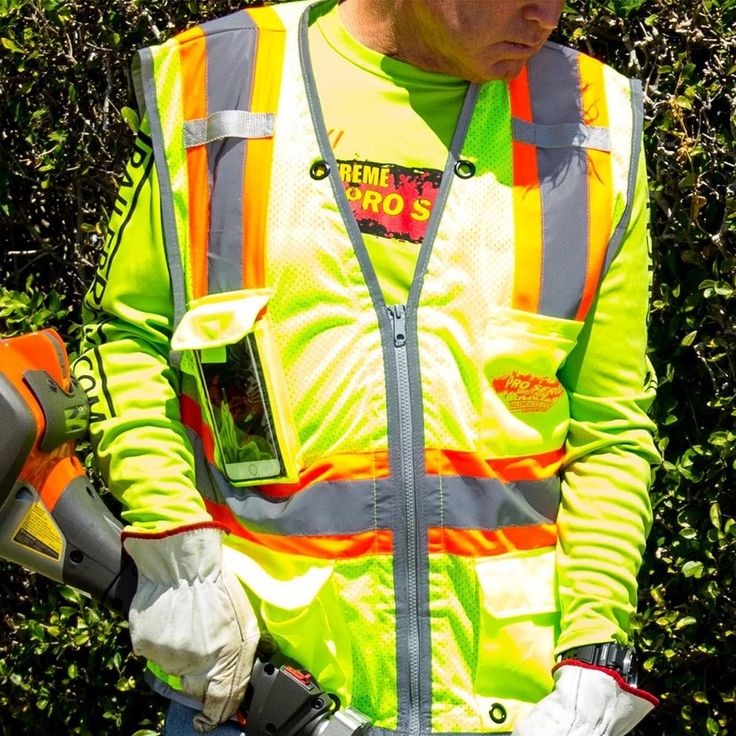
Proper care not only increases the lifespan of your Class 3 safety vest but also maintains its compliance with OSHA and ANSI standards. Taking these steps ensures workers stay visible and safe in hazardous environments.
Final Thoughts
A class 3 safety vest is an essential tool for ensuring visibility, safety, and compliance in high-risk work environments. As we’ve explored, these vests are designed with high-visibility materials, comfort, and durability in mind. They play a crucial role in preventing accidents and protecting workers in industries such as construction, transportation, and emergency services.
Whether you’re a worker, manager, or safety officer, understanding the importance of a class 3 safety vest is key to creating a safer workplace. Choosing the right vest, maintaining it properly, and using it consistently can make a big difference in your safety and the safety of others.
With the right class 3 safety vest, you can feel confident and protected in any environment. It’s a small investment that can have a lasting impact on your well-being and the overall safety culture of your workplace.
